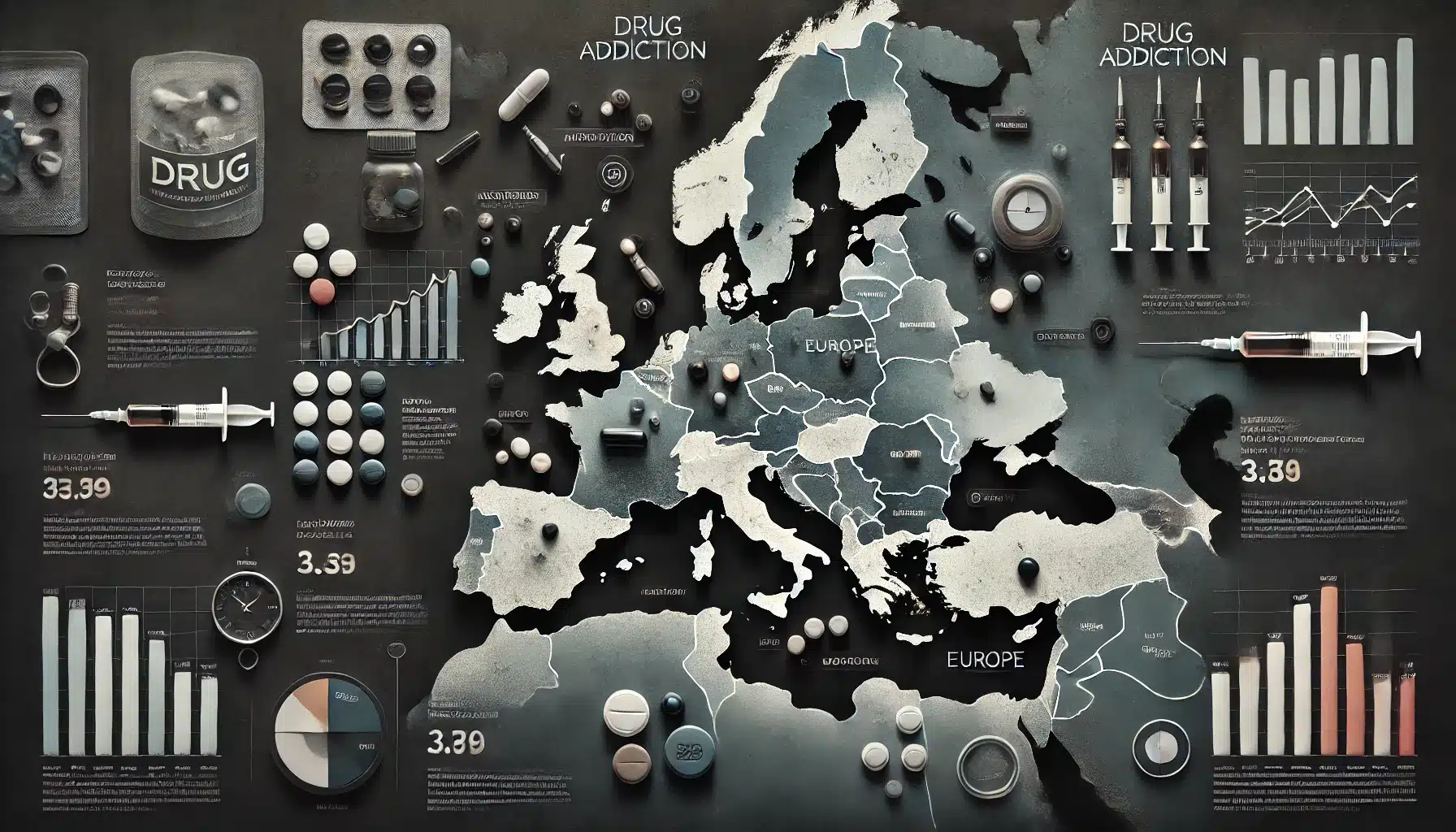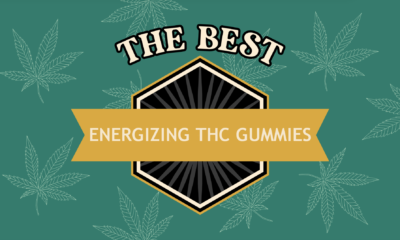addiction
Is Cannabis Addiction a Treatable Medical Condition? – Cannabis | Weed | Marijuana
Published
2 years agoon
By
admin
Is cannabis addiction a treatable medical condition? According to one doctor, “cannabis addiction is a real and treatable medical condition.”
She claims the “cannabis legalization movement” has successfully pushed back against this narrative due to the drug war.
Fortunately, Dr. Salwan is not one of these old-school drug warriors. She knows cannabis doesn’t turn people into criminals and that cannabis prohibition has led to the mass incarceration of peaceful (mostly black) Americans.
Dr. Salwan represents the new school of drug warriors. The kind that promotes more opioids to wean people off opioids. That labels drug use as a “treatable medical condition” rather than an activity.
To her credit, Dr. Salwan recommends cognitive behavioural therapy as a solution to “cannabis use disorder” since that’s where the evidence leads her. (But not without mentioning the “promising” FDA medication that will “reduce cannabis cravings.”)
However, Dr. Salwan is on the education faculty for the American Society of Addiction Medicine. In other words – it is tough for Dr. Salwan to see substance use as anything but a medical condition.
What is Cannabis Use Disorder (CUD)?
Is cannabis addiction a treatable medical condition? What is a “cannabis addiction,” anyway? “Cannabis use disorder” (CUD) is a topic we’ve covered before. It’s a myth that refuses to die.
The belief that outside forces determine our thoughts, behaviours, and actions is only becoming more prominent in the culture where neuroscientific theories of consciousness are accepted as “science” despite their philosophical shallowness.
But let’s get to the crux of Dr. Salwan’s argument. “To shake the collective disavowal of cannabis addiction,” she writes, “It helps to understand the clinical paradigm of all drug addictions, or substance use disorders (SUDs).”
So, whether we’re talking about cannabis, alcohol, or opioids, the hallmarks of SUD are always the same, categorized as the three Cs.
Craving: A strong desire to use the substance
Consequences: Negative consequences of using the substance
Control: A loss of control when consuming the substance (or in the pursuit of).
Other residual SUD “symptoms” include developing a tolerance and experiencing withdrawals. But by this definition, nearly every American suffers from caffeine use disorder and a refined sugar addiction.
Is Cannabis Addiction a Treatable Medical Condition?
Of course, “cravings” are just thoughts. Perhaps you’ve “craved” ex-partners when visiting areas that remind you of them. It’s a common human experience. You don’t have to associate your stream of consciousness with your ego and attach yourself to each and every thought.
Especially if you’re breaking a long-term drug habit (or trying to get over an ex).
Likewise, determining whether the consequences of your actions are negative is up to you. So-called “addiction experts” are supposed to be neutral, value-free scientists.
You could drink a case of beer every night. Destroy your liver, your marriage, turn your kids against you, lose your job and house, and end up living on the street. These all sound like negative consequences of drinking.
But if you frame the experience as positive, then who the hell are “addiction experts” to tell you otherwise? It may seem irrational to us, but many prefer to live on the street and use drugs like fentanyl.
This fact of life is lost on many advocates of taxpayer-funded supply of “addiction medicine.” They want to dehumanize someone’s choices and consider them “mentally ill” because they don’t conform to specific social values.
I find it hard to believe that the left-wing advocates making this argument have ever read (or understood) Foucault. Although they’ll claim him as one of their own.
As for the loss of control – despite the persistence of this myth, it remains just that. A myth. No research worthy of the label “science” supports a loss of control.
Some Real Science to Drive Home the Fact
G. Alan Marlatt was an American-Canadian clinical psychologist and researcher in the field of addictive behaviours.
One of his most well-known studies helps answer whether “cannabis addiction” is a treatable medical condition.
Dr. Marlatt took a group of heavy drinkers who qualified as having alcohol use disorder. He separated them into two groups in two separate rooms.
He gave one group cocktails without alcohol. But the cocktails tasted as if they contained booze. He told this group the cocktail did have alcohol in it. Obviously, the participants reported cravings for more, kept drinking, and some even began behaving intoxicated.
He gave the other group cocktails that contained alcohol. But the drinks didn’t taste like alcohol, and he told the group there wasn’t any in the beverage. This group did not report cravings for more and did not binge drink to excess.
Others have replicated Dr. Marlatt’s study. The 3 C’s of addiction are not scientific concepts. They are a belief system of “public health” masquerading as scientific knowledge.
Contradictions in Dr. Salwan’s Article
Dr. Salwan doesn’t seem aware of the contradictions in her article. For example, she writes it’s “heartening that the prevalence of cannabis addiction among U.S. adults remained below 2 percent from 2002 to 2017, even as cannabis use increased from 10 to 15 percent.”
But how does that make sense? Especially since the THC potency has increased. If the drug itself is causing addiction, shouldn’t higher use rates also increase addiction rates?
Dr. Salwan solves this issue by recognizing that cannabis has – more or less – been destigmatized. If you’re not losing your job or falling behind on the bills, who cares if you engage in wake-n-bakes or smoke weed every night after work?
Destigmatization, says Dr. Salwan, is a “desired social outcome.” However, she believes it comes “at the expense of engagement in treatment,” where only 4 percent of people received CUD treatment in 2019 versus 9 percent in 2002.
Think about that. The number of people who have sought treatment for problematic cannabis use has dwindled, and she believes that’s a problem.
If you make your money from “addiction medicine” and by promoting rehabs and treatment centres – then yes, people not viewing themselves as helpless addicts who need your paid expertise is a problem.
This phenomenon of people viewing their cannabis habits as habits instead of an addiction is a step in the right direction. Only ideologues believe “cannabis addiction” is a treatable medical condition.
FDA Drugs vs. Changing Your Mind
As mentioned, Dr. Salwan pays lip service to “promising” FDA drugs to remedy cannabis addiction or CUD. But, as she writes in the article, all evidence points to cognitive behavioural therapy (and others) being more helpful.
And it’s obvious why. These therapies tend to challenge an individual’s thought process and patterns of thinking rather than affirm how they feel and look for a “root cause” somewhere in their childhood.
Cannabis addiction is not a treatable medical condition because addiction is not real, and problems of the mind are not medical conditions.
Addiction is a social construct that feeds into itself.
Much like race. We’re all homo sapiens. But you can divide people by skin colour, create cultures based on these skin tones, and then propagate and control populations according to the beliefs and values of the various “in” and “out” groups you’ve created with this social construct.
Addiction is the same way. Whether it’s cutting back on cannabis, social media or trying to create positive habits like exercising and eating right.
You can recognize your free will and autonomy or believe your habits and preferences are a “disease” or “disorder” of the brain. That you’re masking some underlying cause that only years of therapy and a cocktail of pharmaceuticals will cure.
Dr. Salwan worries that people have been denied access to CUD treatment because of its illegality or because their “symptoms were trivialized.”
And indeed, we’re not trying to trivialize someone who feels addicted. It’s incredibly frustrating. But, like poor race relations stemming from government policy, school indoctrination, and media coverage, this poor relationship between drugs and consumers results from “addiction experts.”
Dr. Salwan’s framing of the issue does not help.
Is Cannabis Addiction a Treatable Medical Condition?
“Cannabis use disorder” is a concept created and reinforced by these so-called experts.
But what about people (i.e. “cannabis addicts”) who strongly prefer the herb with their actions but not in their speech?
It could be they think cannabis helps them cope with some traumatic past.
And it could be that some people just like to get fucked up. For whatever reason, they want to feel numb. And drugs are an effective way of bringing about that state.
But it’s a leap in logic to blame the substance. It confuses cause and effect. It’s putting the cart before the horse in every sense of the term.
addiction
Can Psychedelics Treat Addiction and Alcoholism?
Published
7 months agoon
September 13, 2024By
admin
Psychedelics, once associated primarily with counterculture and recreational drug use, are now being seriously studied for their therapeutic potential in treating drug addiction and alcoholism. Recent research has shown that substances like psilocybin, LSD, and ayahuasca may have profound benefits for individuals struggling with Alcohol Use Disorder (AUD) and substance use disorders (SUD). These compounds are being reconsidered not only for their ability to induce altered states of consciousness but also for their potential to address addictive behaviors and psychological trauma at the root of addiction.
Psilocybin’s Efficacy in Treating Alcohol Use Disorder
One groundbreaking study, conducted at New York University and Johns Hopkins University, demonstrated the potential of psilocybin in treating Alcohol Use Disorder (AUD). The researchers focused on individuals with severe AUD, administering two doses of psilocybin in conjunction with psychotherapy. The results were notable: participants reported a 50% reduction in heavy drinking days over an eight-month period, with some maintaining abstinence from alcohol even a year later.
The trial followed a double-blind, randomized approach and found that the therapeutic effects of psilocybin were superior to those observed with placebo treatments. Dr. Michael Bogenschutz, a lead researcher in the study, emphasized the importance of the psychedelic experience itself in breaking the cycle of addiction. Psilocybin appears to help patients break through entrenched mental patterns, often revealing deeper emotional connections and realizations that drive more meaningful behavior change.
How Psychedelics Influence the Brain to Combat Addiction
The mechanism behind the efficacy of psychedelics in treating addiction is thought to involve neuroplasticity, or the brain’s ability to reorganize and form new connections. By interacting with serotonin 2A receptors, particularly in the prefrontal cortex and default mode network, psychedelics can enable profound shifts in perception and cognition. These altered states of consciousness allow individuals to confront underlying psychological issues, such as trauma or negative emotional patterns, which are often at the core of addictive behaviors.
Many individuals undergoing psychedelic-assisted therapy report experiencing a “reset” of their mental state, facilitating a more open mindset that helps them engage with therapy in a deeper, more effective way. This contrasts with traditional addiction treatments, such as methadone or buprenorphine, which primarily manage withdrawal symptoms but do not address the psychological components of addiction.
LSD and Its Potential in Addiction Treatment
LSD (lysergic acid diethylamide) has also shown promise in treating addiction, particularly alcoholism. Early studies from the 1950s to the 1970s suggested that LSD might help reduce alcohol dependency, but interest in this line of research waned due to regulatory crackdowns on psychedelic research. However, more recent studies have reignited interest in LSD’s therapeutic potential.
A meta-analysis published in the Journal of Psychopharmacology reviewed data from six trials involving over 500 patients. It concluded that a single high dose of LSD, administered in a therapeutic setting, was associated with a significant reduction in alcohol consumption. The study found that LSD’s psychedelic effects could lead to lasting changes in personality traits, such as openness and emotional resilience, which are crucial for overcoming addiction.
Ayahuasca and Addiction Recovery
Ayahuasca, a traditional Amazonian brew containing DMT (dimethyltryptamine) and MAO inhibitors, has been the focus of recent studies examining its potential to treat addiction. Researchers have found that ayahuasca’s intense psychoactive properties, combined with its ability to facilitate introspection and emotional healing, may help individuals overcome opioid and stimulant addiction. A study published in Frontiers in Pharmacology noted that ayahuasca led to significant improvements in mental health and reductions in addictive behaviors.
Ayahuasca ceremonies, often conducted in a spiritual context, have been shown to promote healing through vivid and sometimes challenging visions. Participants often report gaining insights into the underlying causes of their addiction, leading to long-lasting psychological benefits.
Challenges in Psychedelic-Assisted Therapy
While the results of these studies are promising, the use of psychedelics in treating addiction is not without challenges. For one, the psychedelic experience itself can be unpredictable, and not all patients experience the profound mystical or emotional breakthroughs associated with positive outcomes. The effectiveness of psychedelic-assisted therapy appears to be linked to the quality of the therapeutic environment and the expertise of the facilitators, meaning that careful preparation and integration are key to success.
Moreover, while psychedelics like psilocybin and LSD do not appear to be physically addictive, their use must still be carefully regulated to prevent potential psychological risks, such as hallucinations, anxiety, or psychotic episodes in vulnerable individuals. Current research emphasizes the need for controlled settings where trained therapists can guide patients through their psychedelic experiences.
Ongoing Research and Future Directions
Given the promising early results, psychedelic research is entering a new phase, with larger clinical trials currently underway. The National Institutes of Health (NIH) recently allocated $2.4 million to explore the use of psychedelics in treating methamphetamine addiction, further solidifying the role of psychedelics in addiction therapy. Similarly, ongoing studies are looking into psilocybin’s potential to treat opioid addiction and cocaine dependence, conditions that have been notoriously difficult to treat with conventional methods.
As research progresses, it is likely that psilocybin, LSD, and other psychedelics will become more widely recognized as effective tools for addiction treatment. While more research is needed to fine-tune these therapies and better understand their long-term effects, early indications are that psychedelics could revolutionize addiction and alcoholism treatments in the coming decades.
Conclusion
Psychedelics like psilocybin, LSD, and ayahuasca are emerging as potential breakthrough therapies for treating drug addiction and alcoholism. By promoting neuroplasticity and addressing the psychological roots of addiction, these substances offer an alternative to traditional addiction treatments, which often focus on managing symptoms rather than curing the disease. With ongoing research and increasing clinical trials, psychedelic-assisted therapy may become an essential tool in the fight against substance use disorders, offering hope to millions of people who struggle with addiction, such as alcoholism.
Sources
Johns Hopkins Medicine: Psychedelics in Addiction Treatment
Progress in Neuro-Psychopharmacology and Biological Psychiatry
National Institutes of Health (NIH) Research on Psychedelics
Frontiers in Pharmacology: Ayahuasca for Addiction Recovery
JAMA Otolaryngology – Head & Neck Surgery
Related
addiction
The Evolving Opioid Crisis in Europe: Heroin and Synthetic Threats
Published
7 months agoon
September 12, 2024By
admin
The opioid crisis in Europe is growing in complexity, with heroin continuing to dominate the market while synthetic opioids, such as fentanyl and its analogs, emerge as potent new threats. The 2024 EU Drug Markets Report, released by the European Monitoring Centre for Drugs and Drug Addiction (EMCDDA) and Europol, provides a comprehensive analysis of the heroin and synthetic opioid market, detailing the health risks, evolving trafficking routes, and potential future challenges.
Heroin in Decline? Why Synthetic Opioids Pose a New Threat in Europe
Heroin’s Ongoing Impact in Europe
Heroin remains the most commonly used illicit opioid in Europe, with an estimated 1 million high-risk opioid users. The European heroin market is valued at over €5.2 billion annually, indicating the persistent demand for this drug. In 2021, EU countries seized 9.5 tonnes of heroin, the largest quantity in 20 years. These figures underscore the strong presence of heroin in Europe, despite the introduction of harm reduction programs aimed at curbing opioid use.
The health consequences of heroin use are severe. In 2021, opioids were responsible for three-quarters of Europe’s 6,000 drug-related overdose deaths, with heroin being a leading factor. Long-term users are aging, adding complexity to public health strategies, as older opioid users present with more chronic health problems.
Afghanistan’s Opium Ban: Future Implications for Heroin Supply
Nearly all heroin consumed in Europe is derived from opium produced in Afghanistan. However, Afghanistan’s opium production has seen a dramatic decline following the Taliban’s 2022 ban on poppy cultivation, which led to a 95% reduction in production by 2023. While the immediate impact on heroin availability in Europe has been minimal, the report warns that a sustained ban could lead to future heroin shortages. Such shortages could open the door for synthetic opioids to dominate the market.
The decline in Afghan opium cultivation from 233,000 hectares in 2022 to just 10,800 hectares in 2023 has raised concerns about the future of heroin availability in Europe. Should the Taliban continue to enforce the ban, experts believe the resulting heroin scarcity could increase the use of more potent and dangerous synthetic opioids, exacerbating the public health crisis.
The Rise of Synthetic Opioids: Fentanyl and its Analogues
Synthetic opioids, such as fentanyl, are becoming more prevalent in the European drug market. These substances are far more potent than heroin, and even small doses can lead to fatal overdoses. The 2024 report highlights how these synthetic opioids are contributing to a growing number of overdose deaths and hospital emergencies across Europe. In countries such as Estonia and Sweden, fentanyl is responsible for a significant proportion of drug-related deaths.
Fentanyl analogs are particularly concerning because they can be mixed with other drugs like heroin or cocaine, often without the user’s knowledge. The increasing presence of these synthetic opioids is a major public health concern, as traditional harm reduction measures, such as naloxone distribution and needle exchange programs, are less effective against these more potent substances.
Changing Trafficking Routes and Criminal Networks
Traffickers are increasingly adapting their methods in response to heightened enforcement measures and geopolitical developments. The traditional Balkan route, which brings heroin through Turkey and Bulgaria into Europe, has seen increased enforcement and stricter border controls, prompting traffickers to shift towards alternative routes.
The Southern route is becoming more prominent, with significant heroin shipments passing through Iran and Pakistan before reaching Europe via major seaports. The United Arab Emirates (UAE) has emerged as a key transshipment hub for heroin, providing both logistical support and avenues for money laundering. Meanwhile, the ongoing Russia-Ukraine war has prompted criminal networks to modify their trafficking routes, further complicating law enforcement efforts.
Public Health and Harm Reduction Efforts
Harm reduction strategies have had some success in mitigating the impact of opioid use in Europe. Programs such as opioid substitution therapy (OST) and needle exchange have helped reduce the number of new users injecting heroin, thereby lowering the risks of HIV and hepatitis C transmission. However, the growing prevalence of synthetic opioids poses new challenges. These potent drugs often require stronger overdose prevention measures, such as fentanyl test strips and more widespread access to naloxone, an opioid antagonist used to reverse overdoses.
Additionally, the report notes the importance of expanding data collection and improving early warning systems to monitor emerging trends in opioid use and trafficking. These systems allow public health authorities and law enforcement to respond more quickly to new synthetic opioids entering the market.
Challenges in Treating Opioid Addiction
Treatment for opioid addiction, particularly heroin, is evolving. Europe’s aging population of opioid users presents new challenges, as older users are more likely to have complex medical conditions. Many long-term users require not just drug treatment but also social support and healthcare for chronic conditions related to long-term substance use. Furthermore, gender-specific issues are emerging, as women who use opioids face more barriers to accessing treatment and are more likely to present with co-occurring psychological or social issues.
Conclusion
The opioid crisis in Europe is evolving, with heroin still posing a significant threat to public health, while synthetic opioids like fentanyl are emerging as an even more dangerous force. The reduction in Afghan opium production and the shifting trafficking routes complicate the landscape further. To tackle this complex issue, Europe must continue to invest in harm reduction, international cooperation, and early warning systems to prevent more overdose deaths and manage the changing face of the opioid market. Without a coordinated response, Europe risks facing an even more devastating public health crisis in the coming years.
Related

The fact that some people are eating dogs and cats is a highly sensitive topic that crosses cultural, social, and ethical boundaries. In many regions, these animals are consumed due to cultural traditions and necessity, while in other cases, drug-induced behavior may lead individuals to engage in extreme or unusual dietary practices. This article aims to explore the distinction between cultural norms and the desperate, erratic behaviors driven by substance abuse, focusing on the need for cultural sensitivity while addressing harmful behavior.
When Culture Meets Addiction: Who Is Eating Dogs and Cats?
Cultural Practices and the Consumption of Non-Traditional Animals
In some parts of Asia and Africa, the phenomena of eating dogs and cats has historical roots that are tied to both cultural traditions and the availability of resources. In these regions, the eating of non-traditional animals is a normalized practice and is not connected to drug-fueled behavior.
- Cultural Normalcy: In regions such as South Korea, China, and Vietnam, dogs have historically been consumed as part of traditional cuisines. This practice is not driven by addiction or desperation but by cultural norms that view these animals as a food source rather than pets.
- Food Scarcity: In some communities, especially in impoverished or rural areas, consuming non-traditional animals like dogs or cats is a practical response to food scarcity. The decision to eat these animals is based on survival rather than personal preference or altered judgment.
Drug-Induced Dietary Choices: When Addiction Leads to Extreme Behaviors
In contrast to cultural practices, there are cases where individuals under the influence of drugs engage in extreme or bizarre behaviors, such as eating dogs and cats… This behavior is driven by impaired judgment, psychosis, or desperation caused by addiction, and often occurs in isolated or marginalized communities.
- Methamphetamine and Erratic Behavior: Meth users are known to exhibit extreme and irrational behaviors, including eating animals they wouldn’t normally consider food. Meth-induced psychosis can blur the lines between reality and hallucination, leading to bizarre dietary choices such as consuming pets or strays.
- Desperation from Heroin Addiction: Heroin addicts, especially those living in extreme poverty, may consume non-traditional animals out of necessity. Chronic malnutrition and impaired judgment, combined with isolation from society, can drive addicts to make choices they wouldn’t otherwise consider.
Understanding the Cultural vs. Drug-Fueled Divide
It’s crucial to differentiate between cultural practices and behaviors driven by addiction when discussing the consumption of non-traditional animals. Respecting cultural practices while addressing the harmful impacts of substance abuse requires a nuanced understanding of these different contexts.
- Cultural Sensitivity: When discussing the consumption of non-traditional animals, especially in regions where this practice is accepted, it is important to approach the subject with cultural sensitivity. Condemning these practices without understanding their historical and social context can perpetuate stereotypes and breed intolerance.
- Addressing Addiction-Related Behaviors: Conversely, when the consumption of animals like dogs and cats is tied to addiction, the focus should be on treating the root causes of drug abuse rather than criminalizing individuals. Rehabilitation, mental health support, and access to food resources are critical in preventing desperate behaviors.
Ethical Considerations and Animal Welfare
Regardless of whether the consumption of non-traditional animals is driven by culture or desperation, the ethical treatment of animals is a key concern. The dog and cat meat industries have come under scrutiny for their inhumane treatment of animals, and organizations worldwide are working to promote animal welfare and ethical eating practices.
- Animal Rights in Cultural Contexts: While respecting cultural traditions, animal rights organizations are increasingly advocating for more humane practices within these industries. Campaigns to ban or reduce the consumption of dog and cat meat have gained traction, with a focus on reducing cruelty and promoting alternative food sources.
- Animal Cruelty and Drug Addiction: In cases of drug-induced behaviors, the animals involved often suffer from neglect or harm. Providing support for addicts and ensuring animals are removed from harmful environments can help mitigate this issue.

How to Approach the Issue Globally
Addressing the issue of non-traditional animal consumption, whether cultural or drug-fueled, requires a global approach that balances respect for cultural practices with the promotion of humane treatment for animals. Public health initiatives and cultural sensitivity training can help bridge the gap between different viewpoints while ensuring that animals and people alike are treated with dignity.
- Promoting Cultural Understanding: Efforts to educate the public on the cultural contexts of eating non-traditional animals can help reduce prejudice and promote more respectful global dialogues. Cultural exchange programs and educational campaigns can provide a more nuanced view of these practices.
- Addressing Substance Abuse: On the other hand, combatting the desperation and irrational behavior caused by addiction requires investments in mental health, addiction treatment, and public welfare systems. Providing addicts with support, housing, and access to food can reduce the likelihood of harmful or extreme behaviors.
Conclusion
While the consumption of non-traditional animals like dogs and cats may be culturally accepted in some regions, drug-induced behaviors that lead to similar actions must be understood in a different light. It’s important to address addiction-related behavior with compassion, focusing on rehabilitation and support rather than punishment. At the same time, promoting animal welfare and humane practices in regions where these animals are consumed can create a more ethical global community. By approaching these issues with respect for cultural diversity and a commitment to reducing harm, both animals and humans can benefit.
Related

The best energizing THC gummies of 2025 by Leafly

Mixed Messages From The Feds About Cannabis

How Hemp Helps You Sleep

420 in Texas is at Reggie & Dro

Daily Cannabis Use Can Help People Get Off Opioids (STUDY)

This Wine Issue Is Becoming More Common

Get more for less this 420 at PurLife

Can You Order Cannabis through DoorDash?

Cannabis Enthusiast-Friendy Retreats – GanjaVacations Jamaica

The road ahead for cannabis lending in 2025

Distressed Cannabis Business Takeaways – Canna Law Blog™

United States: Alex Malyshev And Melinda Fellner Discuss The Intersection Of Tax And Cannabis In New Video Series – Part VI: Licensing (Video)

What you Need to Know

Drug Testing for Marijuana – The Joint Blog

NCIA Write About Their Equity Scholarship Program

It has been a wild news week – here’s how CBD and weed can help you relax

Cannabis, alcohol firm SNDL loses CA$372.4 million in 2022

A new April 20 cannabis contest includes a $40,000 purse

Your Go-To Source for Cannabis Logos and Designs

UArizona launches online cannabis compliance online course
Trending
-

 Cannabis News2 years ago
Cannabis News2 years agoDistressed Cannabis Business Takeaways – Canna Law Blog™
-

 One-Hit Wonders2 years ago
One-Hit Wonders2 years agoUnited States: Alex Malyshev And Melinda Fellner Discuss The Intersection Of Tax And Cannabis In New Video Series – Part VI: Licensing (Video)
-

 Cannabis 1012 years ago
Cannabis 1012 years agoWhat you Need to Know
-

 drug testing1 year ago
drug testing1 year agoDrug Testing for Marijuana – The Joint Blog
-

 Education2 years ago
Education2 years agoNCIA Write About Their Equity Scholarship Program
-

 Cannabis2 years ago
Cannabis2 years agoIt has been a wild news week – here’s how CBD and weed can help you relax
-

 Marijuana Business Daily2 years ago
Marijuana Business Daily2 years agoCannabis, alcohol firm SNDL loses CA$372.4 million in 2022
-

 California2 years ago
California2 years agoA new April 20 cannabis contest includes a $40,000 purse














